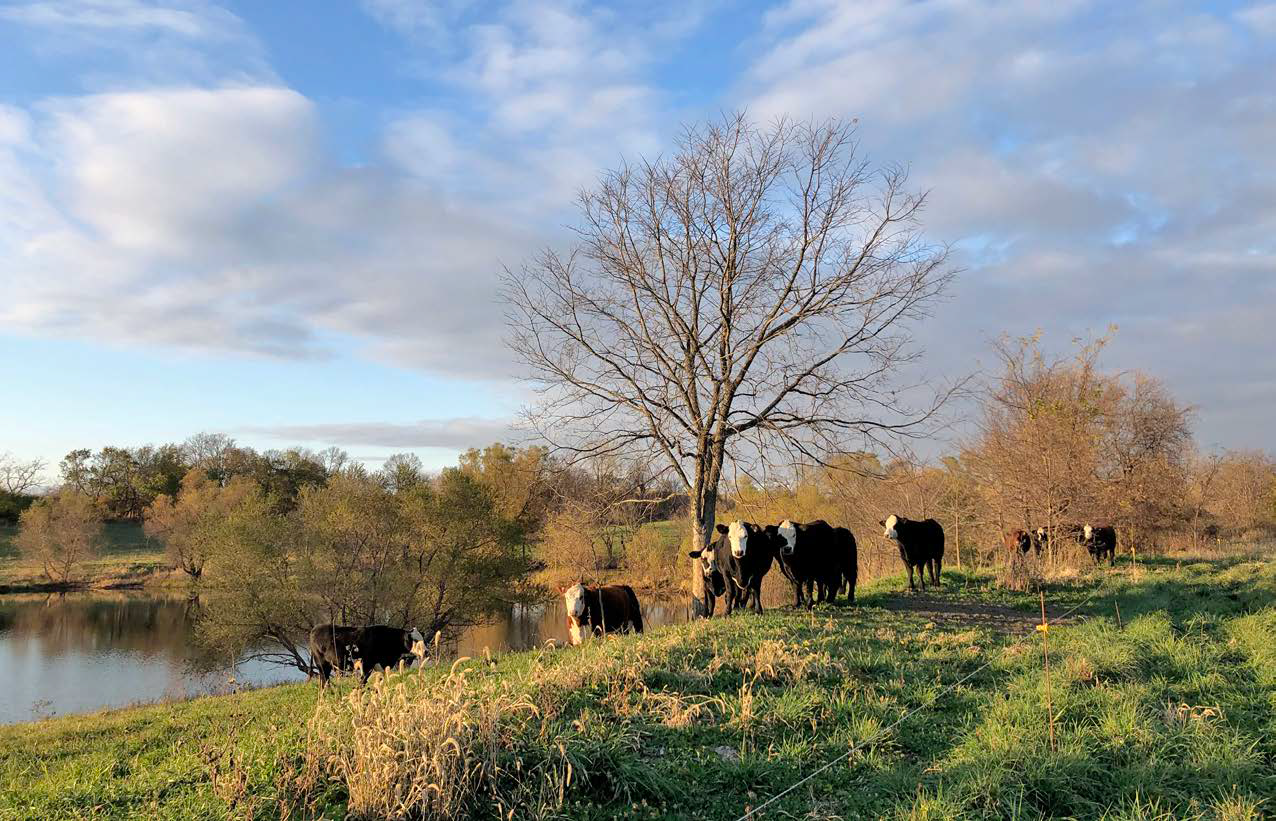Back to the Farm
John and Beth Hogeland are cattle and beef farmers from Lovilia, Iowa. They joined PFI in the summer of 2018, the year John began farming on his family’s land. John is a fifth-generation farmer, with his great-great grandfather purchasing the family land back in 1851. He left for a career as a chef, before returning to the family farm in 2018. “Being a chef really allowed me to rediscover farming, and having organic ingredients to work with.” His wife, Beth Hoffman, is a newcomer to farming, originally from the East Coast. “I feel blessed to have her help here on the farm. It’s been wonderful sharing this with her.”
Together, John and Beth manage 575 acres, focusing primarily on cattle and beef as well as hay production. “I’m especially proud of our efforts in rotational grazing,” John says, when asked what he feels is one of his biggest accomplishments to date on the farm. “Rotational grazing has made a huge difference in our cattle and land health. Our neighbors were out of forage last year by early August and were using hay while we had plenty of forage left, thanks to the native prairie grasses we seeded.”
A Step in the Right Direction
Born the son of traditional row croppers, John wanted to move away from method and focus instead on a more holistic and organic approach to farming. “There’s certainly nothing wrong with traditional crops here in Iowa, and the money is definitely better, but I wanted something different. Being able to utilize parts of my farm that dad never did for pasture and tree cover has made a huge difference for our cattle and the local wildlife.”
Utilizing the Environmental Incentives Program (EQIP), John was able to install six ponds, with a further two being done without assistance. “Dad also used some EQIP money back in the day to install some terraces, but they can cause drainage issues, so we’re going to move away from those. ” A large chunk of the grant money has been used to establish more native vegetation on the cattle pasturelands that John uses for rotational grazing. “We used a lot of it for reseeding prairie grasses into the pastures. Adding these warm season prairie grasses, those come right back up after grazing. They are very deep rooted and help hold the water. Grasses like orchard grass, they get grazed down then just sit there. They don’t hold that water like native grasses.”
John has also been concerned with battling intensifying drought conditions. “I lived out in California, working with farmers, long enough that I’ve seen what is happening out there, and it could happen here too. You have to have access to water, whether it be for irrigation or animals.” With climate in mind, John and Beth have installed watering systems with EQIP using the ponds already on their land. Together, they laid down 3,000 yards of gravity-flow underground plastic piping, as well as hydrants, into what is normally dry pasture, allowing for even greater ability to graze cattle in a rotational cycle.

Cattle graze on grass their whole lives at Whippoorwill Creek Farm, operated by Beth and John Hogeland near Lovillia, Iowa.
An Eye on the Future
“I really don’t know what future climate will bring us, so I want to make sure we are resilient moving forward.” That resilience takes shape on John and Beth’s farm by restoring native habitat and introducing silviculture into the pastures by planting a variety of native trees including oak, hickory, sycamore and walnut. “We also planted a lot of chestnut. My great grandfather cut all the oak and hickory, so we’re trying to bring that back and refurbish the land as much as possible.”
John admits that sometimes the extra work is daunting, but well worth it in the end, not only for high quality beef, but local wildlife as well. “Definitely we have seen a lot of biodiversity improvement. We get a lot of water fowl through the pond areas. The ponds are a big draw for a lot of wildlife. They really like that access to the water. During the dry months, we will get of lot of deer, coyotes, foxes and birds.”
Over the course of the next several years, John and Beth plan on installing more ponds and planting more trees, particularly chestnut. Starting this year, they will be testing their soil in partnership with the Bionutrient Food Association to determine what further conservation efforts can be implemented on their pasturelands. “I take pride in our beef quality, and the quality of the land is intrinsically ties with that.”
Farmers and landowners interested in learning more about EQIP and other conservation programs can click here for a series of fact sheets on the most popular programs or can visit their local USDA service center.

